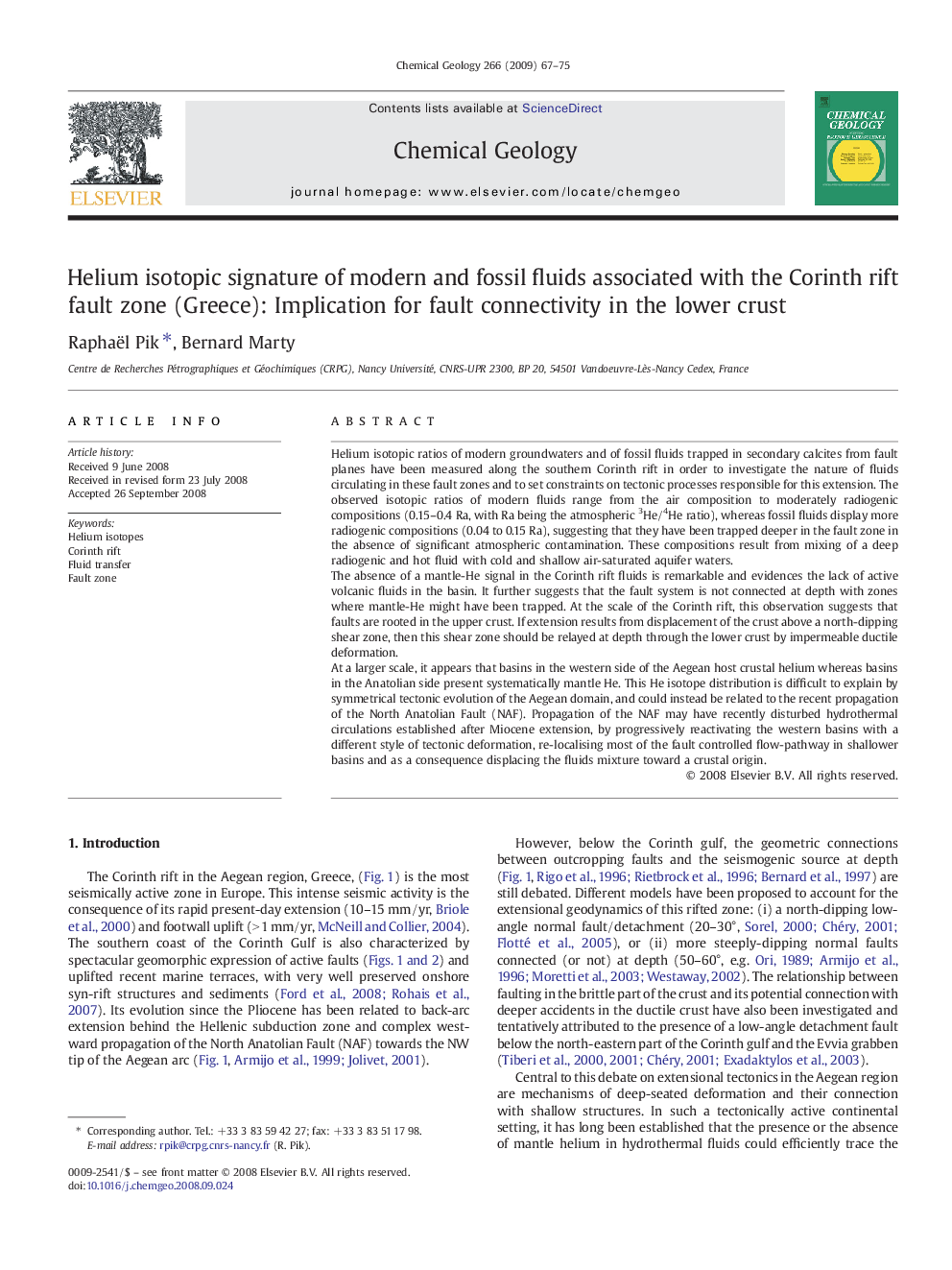| کد مقاله | کد نشریه | سال انتشار | مقاله انگلیسی | نسخه تمام متن |
|---|---|---|---|---|
| 4700286 | 1637702 | 2009 | 9 صفحه PDF | دانلود رایگان |

Helium isotopic ratios of modern groundwaters and of fossil fluids trapped in secondary calcites from fault planes have been measured along the southern Corinth rift in order to investigate the nature of fluids circulating in these fault zones and to set constraints on tectonic processes responsible for this extension. The observed isotopic ratios of modern fluids range from the air composition to moderately radiogenic compositions (0.15–0.4 Ra, with Ra being the atmospheric 3He/4He ratio), whereas fossil fluids display more radiogenic compositions (0.04 to 0.15 Ra), suggesting that they have been trapped deeper in the fault zone in the absence of significant atmospheric contamination. These compositions result from mixing of a deep radiogenic and hot fluid with cold and shallow air-saturated aquifer waters.The absence of a mantle-He signal in the Corinth rift fluids is remarkable and evidences the lack of active volcanic fluids in the basin. It further suggests that the fault system is not connected at depth with zones where mantle-He might have been trapped. At the scale of the Corinth rift, this observation suggests that faults are rooted in the upper crust. If extension results from displacement of the crust above a north-dipping shear zone, then this shear zone should be relayed at depth through the lower crust by impermeable ductile deformation.At a larger scale, it appears that basins in the western side of the Aegean host crustal helium whereas basins in the Anatolian side present systematically mantle He. This He isotope distribution is difficult to explain by symmetrical tectonic evolution of the Aegean domain, and could instead be related to the recent propagation of the North Anatolian Fault (NAF). Propagation of the NAF may have recently disturbed hydrothermal circulations established after Miocene extension, by progressively reactivating the western basins with a different style of tectonic deformation, re-localising most of the fault controlled flow-pathway in shallower basins and as a consequence displacing the fluids mixture toward a crustal origin.
Journal: Chemical Geology - Volume 266, Issues 1–2, 15 August 2009, Pages 67–75